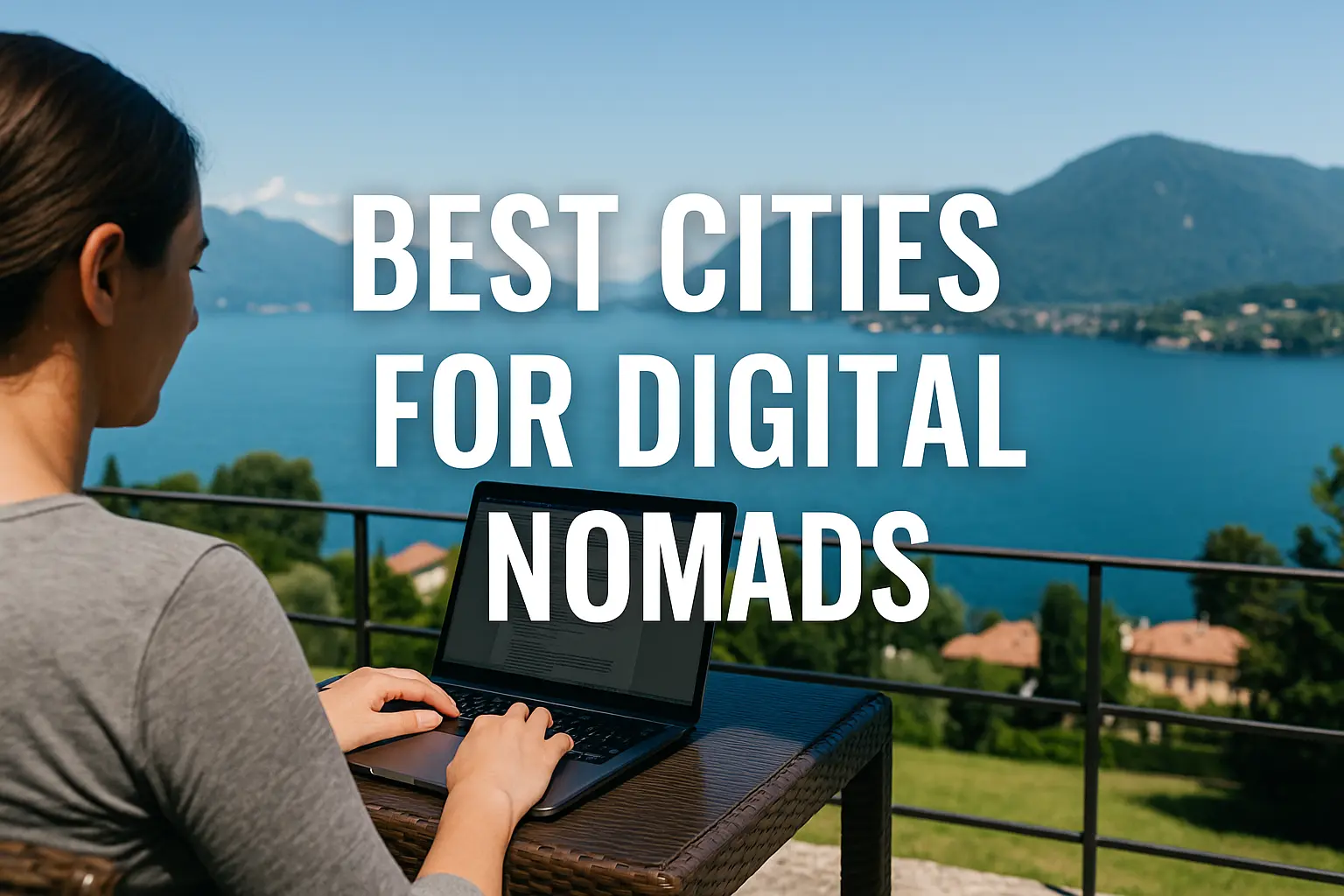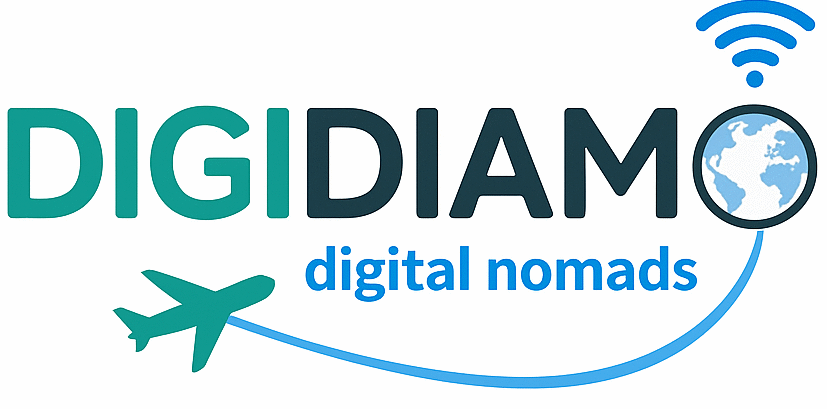Coliving for digital nomads: benefits and top picks
Coliving has become one of the most talked about trends among digital nomads. The idea of sharing a living space with like-minded people who also work remotely offers a balance between independence and community. For many travelers, this setup solves two common problems: loneliness and productivity. With the rise of remote work, coliving is no longer a niche option but a growing movement. In this guide we will look at what makes coliving special, how it compares to other housing options, and where to find the best spaces worldwide. For a full comparison of housing types, the broader guide to digital nomad accommodation explains how coliving fits within the bigger picture.

What coliving really means
Coliving is more than just sharing a flat. It usually involves a property designed for professionals who live and work remotely. Most coliving spaces include private bedrooms with shared kitchens, lounges, and coworking areas. The key difference from a normal shared apartment is the focus on community. Events like workshops, group dinners, or networking sessions are part of the package.
The model attracts freelancers, entrepreneurs, and remote employees who want the energy of a social setting without giving up personal space. Contracts are flexible, often from one week to several months, which suits the nomadic lifestyle.
Why coliving is growing
Several forces explain the growth of coliving.
- Remote work boom: More companies now allow staff to work from anywhere.
- Community need: Many nomads feel isolated when staying in short-term rentals. Coliving creates instant social circles.
- Flexibility: No need for long leases or dealing with landlords.
- Amenities included: Utilities, Wi-Fi, and furniture are bundled in the rent.
This mix makes coliving a natural choice for those who want more than a bed and Wi-Fi.
Benefits of coliving for nomads
Built-in community
One of the hardest parts of long-term travel is loneliness. Coliving gives daily contact with other professionals, making it easier to share ideas or simply have company. Friendships often grow fast because residents share similar lifestyles.
Productive environment
Unlike noisy hostels, most coliving spaces are designed with work in mind. Dedicated coworking areas, ergonomic desks, and strong internet create conditions to stay productive.
Flexibility of stay
Coliving contracts can be week-to-week or monthly. This flexibility suits nomads who often change destinations based on visa limits, weather, or personal plans.
Networking opportunities
Living with people from different backgrounds creates natural chances to collaborate. Many residents discover new projects or clients through casual conversations.
Cost efficiency
While not always the cheapest option, coliving can be more affordable than renting an apartment alone once utilities and coworking passes are added.
Downsides of coliving
It is not a perfect system for everyone. Some drawbacks include:
- Less privacy: Even with private rooms, common areas are shared.
- Higher base cost: Compared to hostels or local rentals, prices are usually higher.
- Community mismatch: Not all residents will share your lifestyle or habits.
- Limited choice in small cities: Most coliving spaces exist in major nomad hubs.
Coliving vs other housing options
| Housing type | Privacy | Community | Flexibility | Cost level | Best for |
|---|---|---|---|---|---|
| Hostel | Low | High | High | Low | Backpacking, short stays |
| Short-term rental | High | Low | Medium | Medium | Independent nomads |
| Hotel | High | Low | Medium | High | Comfort and service |
| Coliving space | Medium | High | High | Medium+ | Social nomads, networking |
| Serviced apartment | High | Low | Medium | Medium+ | Stability and privacy |
This table shows that coliving is the middle ground. It balances community with privacy and flexibility better than most other housing options.
Popular coliving destinations
Bali, Indonesia
Bali has become a global hub for coliving. Spaces like Outpost and Dojo combine accommodation with coworking and wellness activities. The cost of living is low, and the community is diverse.
Lisbon, Portugal
Lisbon is known for its creative scene and sunny weather. Coliving houses such as Selina or Startup Lisboa attract entrepreneurs and remote workers. The city offers a mix of European comfort and affordable prices.
Medellín, Colombia
With its mild climate and growing tech scene, Medellín is ideal for digital nomads. Coliving networks such as Casa Basilia and Los Patios provide both private and shared spaces.
Mexico City, Mexico
Coliving is expanding fast in Mexico City. Spaces like U-Co and Selina give nomads a chance to enjoy city life while having structured work environments.
Dakhla, Morocco
Though smaller in scale, Dakhla is attracting nomads with its calm environment and kitesurf culture. A few boutique coliving projects are appearing, offering quiet spaces near the ocean.
Global coliving networks
Some brands now operate multiple properties across the world.
- Outsite: Houses in the US, Europe, Latin America, and Asia.
- Selina: Combines hostels, hotels, and coliving under one brand, with locations across several continents.
- NomadX: Focused on Portugal with plans to expand.
- Colive: European network offering both long- and short-term stays.
These networks help nomads move from city to city while staying in familiar setups.
How to choose the right coliving space
When selecting a coliving space, several factors matter:
- Internet speed: Check reviews for real experiences.
- Community focus: Some houses lean toward startups, others toward creatives.
- Events offered: Regular workshops or group dinners help build connections.
- Location: Being near cafes, coworking hubs, or transport saves time.
- Price transparency: Make sure utilities and services are included.
Price ranges
Coliving prices depend on city and season.
| Region | Average monthly cost (USD) | Example cities |
|---|---|---|
| Southeast Asia | 400–700 | Bali, Chiang Mai |
| Europe | 700–1,200 | Lisbon, Barcelona |
| Latin America | 500–900 | Medellín, Mexico City |
| Africa | 400–800 | Cape Town, Dakhla |
| North America | 1,000–1,800 | Los Angeles, New York |
These prices often include utilities, internet, and cleaning.
Tips for making the most of coliving
- Join community events early to meet residents.
- Respect shared spaces to keep harmony.
- Balance work and social time to avoid burnout.
- Stay flexible in case the vibe does not match your expectations.
- Use trial weeks before committing to long stays.
Future of coliving
The trend is likely to grow. Subscription models are emerging where nomads pay a flat fee to move between cities within a network. Sustainability is also gaining importance, with eco-friendly houses and renewable energy becoming selling points. Hybrid models mixing coliving, coworking, and wellness retreats will expand as demand rises.
Conclusion
Coliving for digital nomads is more than a housing solution. It is a lifestyle choice that combines community, work readiness, and flexibility. While not the cheapest option, it often pays off through networking, friendships, and productivity. The right coliving space can turn a city into a home in just a few days. For those trying to stretch their travel funds while keeping quality, it is worth exploring cheap accommodation for digital nomads to balance community living with budget strategies.






